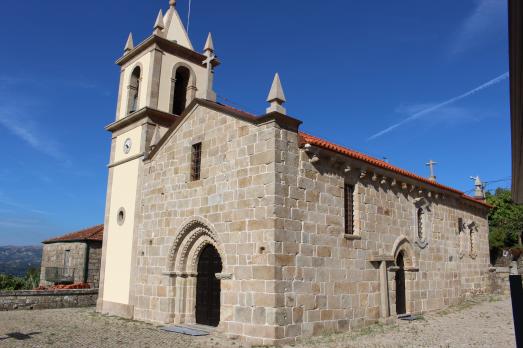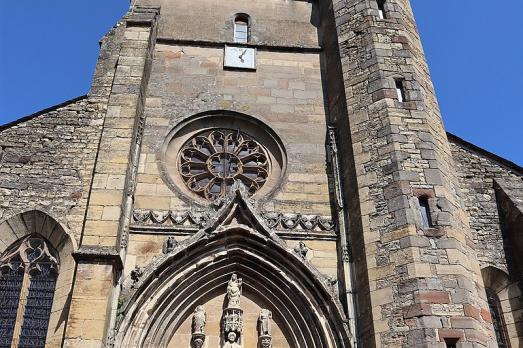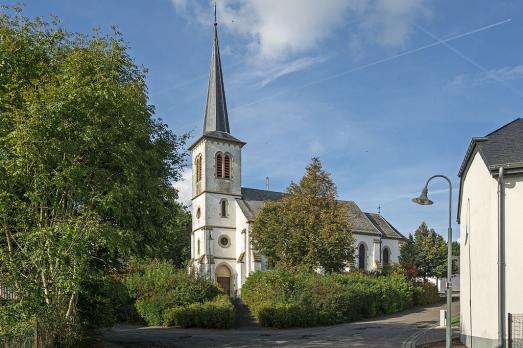
Church of Saint Catherine, Etia
Etia, GR
.
Here you can search for a building to visit. You can use the map find destinations, or you can use the filters to search for a building based upon what different criteria.

Etia, GR
.

Thessaloniki, GR
The Church of Saint Catherine is a Byzantine church from the late 13th century. The building was originally intended to be a church for the Christós Pantodýnamos Monastery. Under Bayezid II (1481 - 1512), it was transformed into a mosque. A restoration took place from 1947 to 1951. Since 1988, it has been listed as a UNESCO World Heritage Site among "Paleochristian and Byzantine buildings of Thessaloniki".

Dimitsana, GR
.

Koroni, GR
The church of Agios Charalambos was built in the 17th century in the complex of the Koroni Castle. The church was transformed into a mosque during Ottoman rule. In 1829 it was converted back into a church.

Cinfães, PT
The Church of Saint Christopher of Nogueira is included in the set of buildings classified as late Romanesque, although the traces reused in the current structure, such as the frieze on the north side, near the bell tower, indicate a transition between the 12th and the 13th centuries. Its deployment, halfway up the hillside, respects the canonical orientation, thus extending longitudinally on two planes: the nave, larger, with the façade facing west, and the chancel, smaller, with the chevet facing east. The main and side portals are especially noteworthy. The former falls within the thickness of the wall, with no columns, but whose archivolts are adorned by the pearls motif. The south side portal draws our attention to the originality of its décor: two clenched fists placed on the lines of ashlars hold a key and the ceiling heights feature symbolic or decorative motifs, such as a lizard. The inside is distinctly Baroque, highlighting the sectioned ceiling with polychrome wood with 71 hagiographic panels [the life of the saints]. It features five altarpieces [altars] (the mor [main], two lateral and two co-lateral) that are included in the various types of Baroque, from the "National" to the "Johannine style".

Saint-CÙme-d'Olt, FR
Located at the foot of the Aubrac, in the fertile Lot valley, Saint-Côme-d'Olt is a village whose almost circular physiognomy has kept its medieval character. Its city was fashioned around the ancient ramparts which have become the exterior facades of the houses. Three fortified entrance doors; the Porte de la Barrieyre, Thèron and Porte Neuve allow access to its centre, through very typical alleys. In its centre, it houses the two primordial monuments of the site: its twisted bell-tower church and its castle, former manor of the Sires de Calmont built in the 11th century. This church succeeds a first church, located further away, which has become too demanding. In 1521, the request for construction was authorized by the lord, since the Church becoming too small. Since then, some redevelopment works have taken place.

Elounda, GR
.

Galipe, GR
.

Hautbellain (Troisvierges), LU
The church of Saint Corneille is a neo-Gothic church built in 1901 in the heart of the village of Hautbellain.

Akritochori, GR
.

new
The Chassidic Route is a cultural and historical trail tracing the rich legacy of Jewish communities in southeastern Poland and western Ukraine. This region was central to the rise of Chassidism in the 18th century. Here, we highlight 10 remarkable synagogues you’ll discover along this route.

he cradle of the Industrial Revolution in Germany, Chemnitz, is well-known for its industrial heritage landscape, but the city is also home to remarkable examples of religious architecture from different historical periods. Join us as we explore the key landmarks of this European Capital of Culture 2025.

The twin towns of Nova Gorica (Slovenia) and Gorizia (Italy), lying on the border between the two countries, have a rich religious heritage, steeped in centuries of tradition. If you are looking for ideas for your visit, take note of these 10 religious sites that you should not miss.